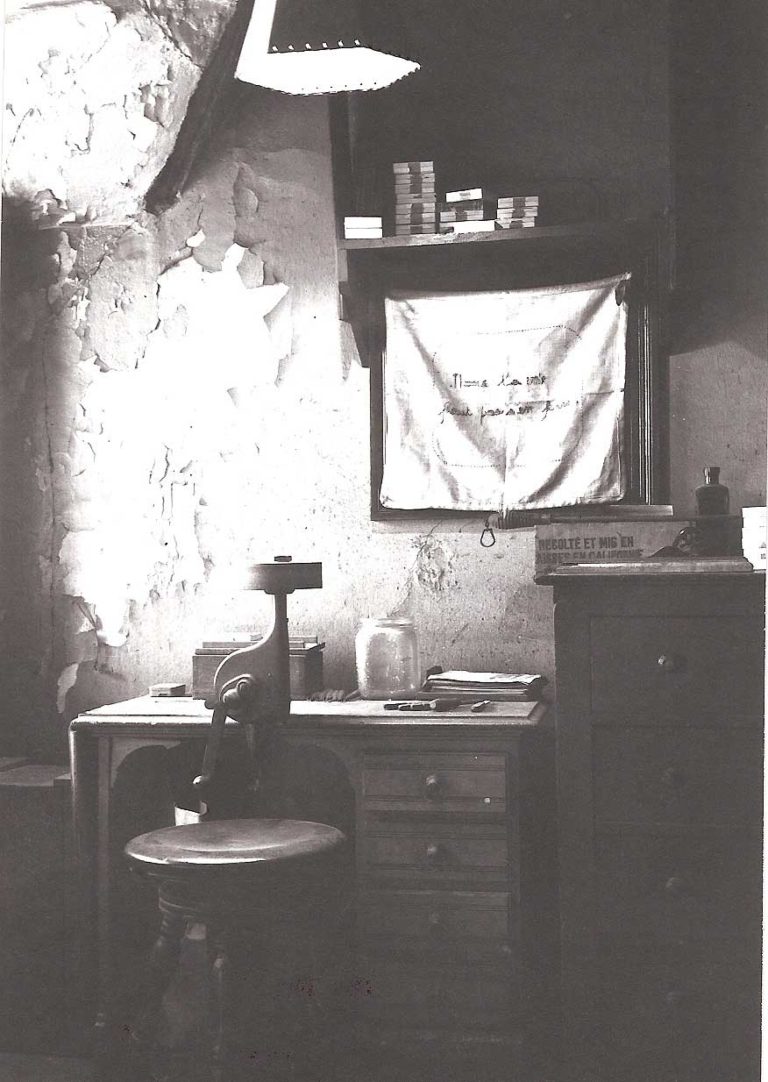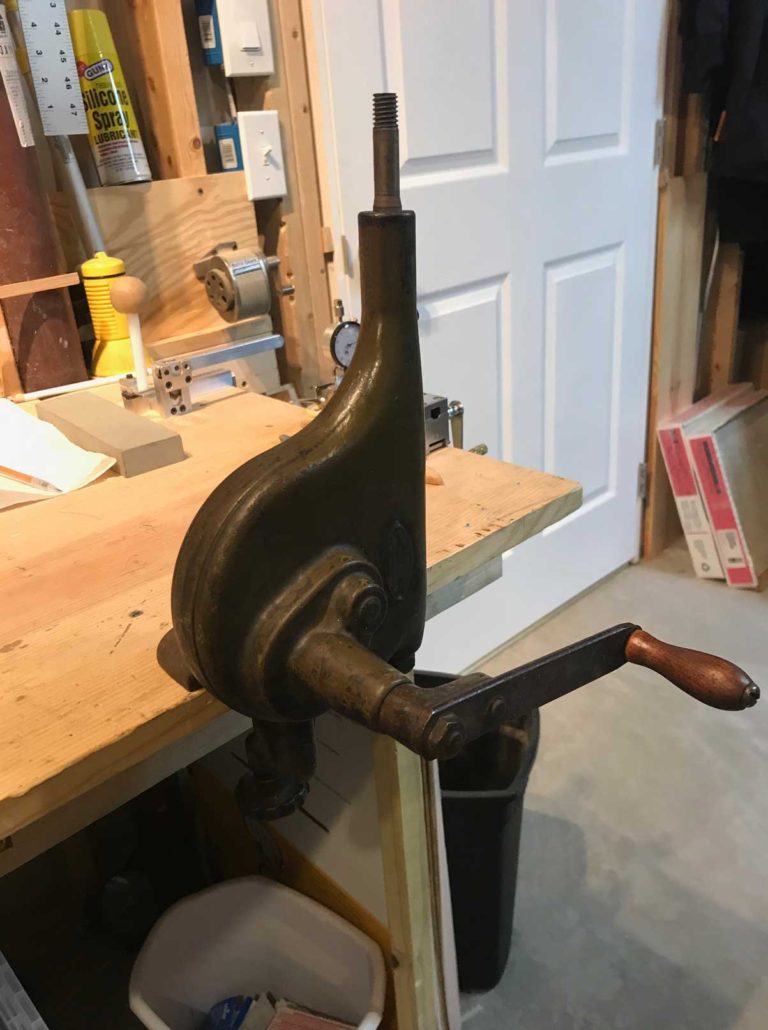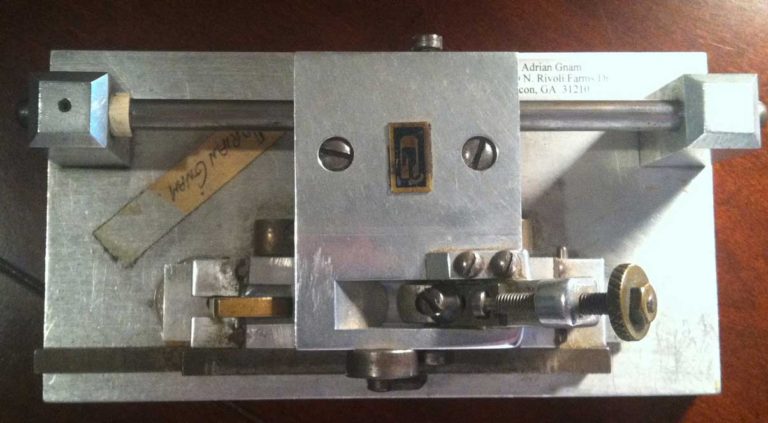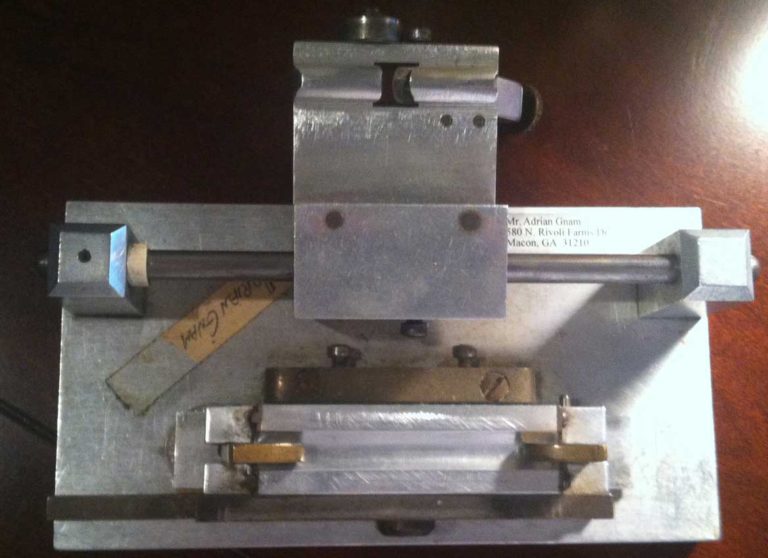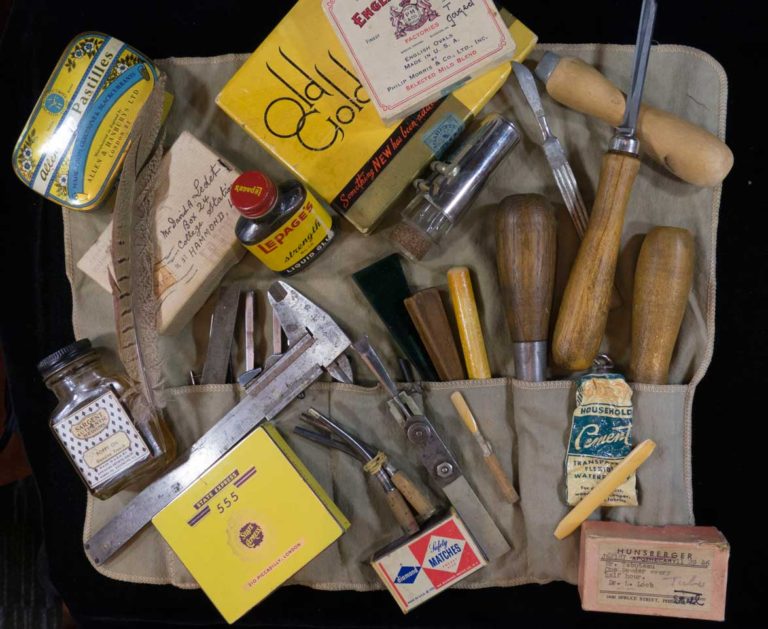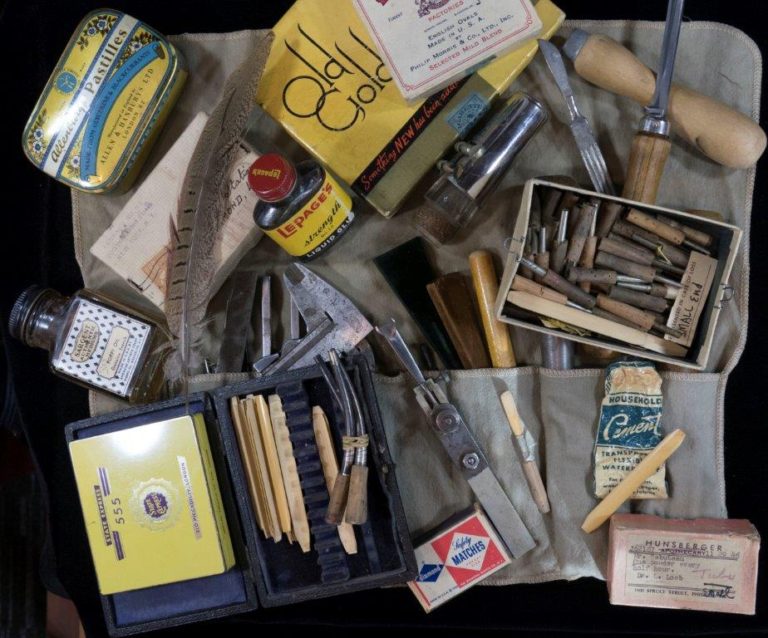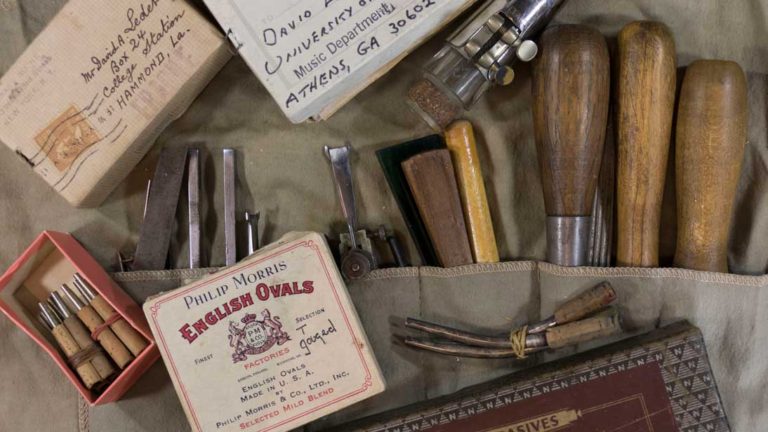The following two photographs show a Graf gouging machine that Tabuteau gave his student, Adrian Gnam, in 1965. It was first manufactured in 1918 by Ernest Graf, a machinist who developed it with the professional input and guidance of Tabuteau. Photographs courtesy of Adrian Gnam.
Following Tabuteau’s death in 1966, David Ledet (a former Tabuteau
student) visited Mme. Tabuteau in her Nice Apartment. Because Ledet had
developed a rapport with the Tabuteaus in Philadelphia (see https://marceltabuteau.com/articles/idrs-articles-featuring-referencing/articles-referencing-marcel-tabuteau/david-ledet/), she knew of his interest in reeds and gave him the tools and other paraphernalia that Tabuteau possessed at his death—historic equipment, much of which can be seen in the two photos below. Following that is an item listing.
Tabuteau’s reed-making tools and other items in the Ledet Collection:*
- Box of 8 small tubes (less than 46 mm? staples) Hunsberger Apothecary
- Box of gouged cane marked “T” English Ovals
- 4 additional boxes: State Express, Allen & Hanbury, Mr. David A. Ledet, Old Gold.
- Piece of gouged cane
- 5 Bottle of Lepage liquid glue for coating binding)
- Vernier caliper
- Micrometer ruler
- Feather for cleaning interior of staples
- Shaper A
- Shaper B
- 2 mandrels
- 3 reed knives
- Knife handle
- Unusual knife for cutting tips of reeds
- Box marked N[Abr]asives (Norton sharpening stone)
- Tuning fork (A= 440)
- Finished reed
- Piece of tube cane for trying reeds
- MISSING: thread; reed cases; plaques; block, easel, (perhaps in boxes above)
- Clarinet mouthpiece with cover: use unknown
- 3 English horn bocals
- Bottle of Poppy Oil for oiling oboe keywork
- Household cement for cementing loose oboe pads
*Not pictured is an additional shaper blade and 3 gouging machines.
The above list kindly provided by Charles-David Lehrer.

